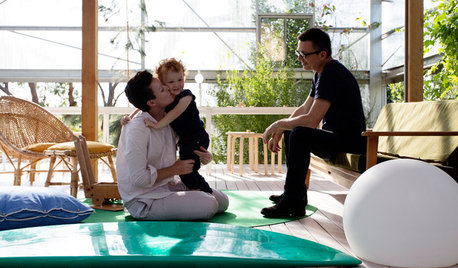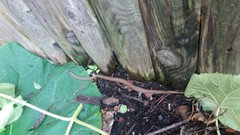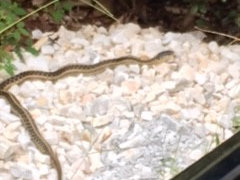Snakes in your compost
jbest123
16 years ago
Featured Answer
Comments (47)
renais
16 years agobcomplx
16 years agoRelated Professionals
Graham Landscape Architects & Landscape Designers · Buford Landscape Contractors · Stamford Landscape Contractors · Surprise Landscape Contractors · Bedford Heights Landscape Contractors · Danvers Landscape Contractors · Edwardsville Landscape Contractors · Glendale Heights Landscape Contractors · Goodlettsville Landscape Contractors · Palos Verdes Estates Landscape Contractors · York Decks, Patios & Outdoor Enclosures · Blue Springs Decks, Patios & Outdoor Enclosures · Coatesville Decks, Patios & Outdoor Enclosures · Hull Decks, Patios & Outdoor Enclosures · Wildomar Decks, Patios & Outdoor Enclosuresjbest123
16 years agoKimmsr
16 years agojbest123
16 years agoLloyd
16 years agojbest123
16 years agojbest123
16 years agoLloyd
16 years agojbest123
16 years agoLloyd
16 years agothe_virginian
16 years agodorisl
16 years agoKimmsr
16 years agoidaho_gardener
16 years agoflatlander
16 years agolionheart_gw (USDA Zone 5A, Eastern NY)
16 years agothe_virginian
16 years agowayne_mo
16 years agomicronthecat
16 years agorootdoctor
16 years agorosefenn
16 years agomicronthecat
16 years agowayne_mo
15 years agomma_fanatic976
15 years agomail-lady
15 years agopolly_il
15 years agoannpat
15 years agolisascenic Urban Gardener, Oakland CA
15 years agovaplantlover
15 years agodlpasti
15 years agotbtbandmom
15 years agoLauren Clear
7 years agoJohn Donovan
7 years agoLoneJack Zn 6a, KC
7 years agotheparsley
7 years agotheparsley
7 years agoUser
7 years agolast modified: 7 years agoWhippet Good
7 years agoJohn Donovan
7 years agoVaporvac Z6-OhioRiverValley
7 years agoteeka0801(7aNoVa)
7 years agoJohn Donovan
7 years agotoxcrusadr
7 years agotheparsley
7 years agoJohn Donovan
7 years ago
Related Stories

EARTH DAYThe Case for Losing the Traditional Lawn
Work less, help the environment and foster connections by just saying no to typical turf
Full Story
LANDSCAPE DESIGNTry Slow Gardening for Some Unexpected Benefits
Why set your garden on the fast track? Here's how to relax and enjoy it in an entirely new way
Full Story
HOUZZ TOURSMy Houzz: Cozy Country Meets Bohemian Artistic in Australia
Healthy helpings of salvage and rustic art give a pastureland home free-spirited style
Full Story
HOUSEKEEPINGHow to Fix a Stinky Garbage Disposal
No plumber’s fee or even a trip to the hardware store is required with these easy solutions
Full Story
EDIBLE GARDENSHow to Grow Your Own Sweet Summer Crops
This guide will help any gardener get started on growing the freshest warm-season veggies and berries for summer
Full Story
GARDENING GUIDESHow to Stop Worrying and Start Loving Clay Soil
Clay has many more benefits than you might imagine
Full Story
FALL GARDENING7 Reasons Not to Clean Up Your Fall Garden
Before you pluck and rake, consider wildlife, the health of your plants and your own right to relax
Full Story
MOST POPULARMy Houzz: Open-Air Living in the Mountains of Bali
Community, jaw-dropping beauty and sustainability come together in a tropical paradise for a London expat
Full Story
HOMES AROUND THE WORLDWorld of Design: A House That’s Barely There
A rural Australian home blurs the boundaries between indoors and outdoors, camping and permanence, privacy and transparency
Full Story
GARDENING GUIDES10 Tips to Start a Garden — Can-Do Ideas for Beginners
Green up your landscape even if you're short on time, money and knowledge, with these manageable steps for first-time gardeners
Full StoryMore Discussions











toxcrusadr